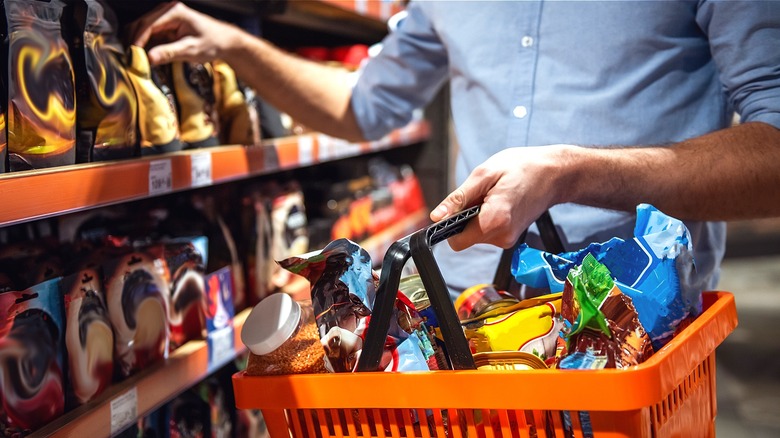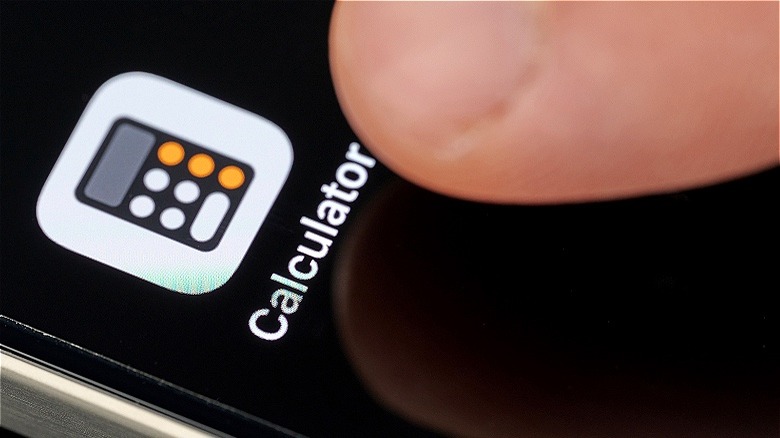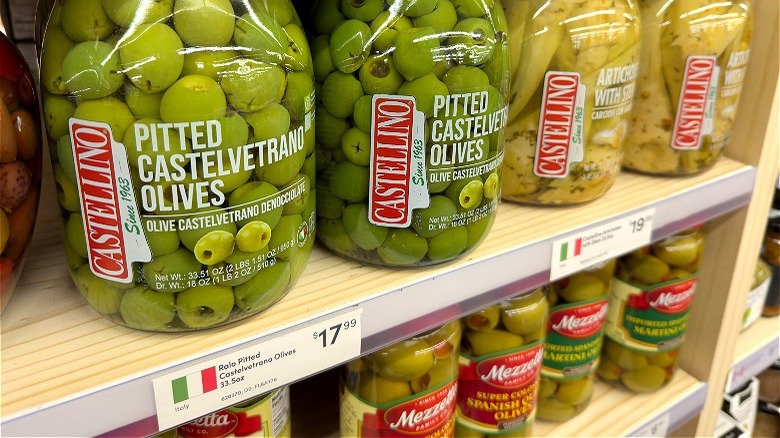Frugal Shoppers Will Always Check This Number When Buying Groceries
Maybe you think you already do everything you can to save money at the grocery store. You don't shop for groceries on an empty stomach and you only grocery-shop while listening to money-saving music. You shop the sales, you clip the coupons, and you know your stuff. Still, there's maybe one shopping tip you're not aware of or don't regularly practice, and that's checking the unit price.
Before you cringe at yet another bit of math to do while standing in the grocery store aisle, let us explain. Unit pricing is easy math, and it can save you money on certain items you want to stock up on. Yes, checking the unit price may involve taking a little more time to shop, and heavy use of your calculator (if it's not already displayed on the shelf's label) but who doesn't want to be the fastest draw in the West when it comes to doing simple division on their smartphone?
What a unit price is and how to find it
Unit prices are a product's cost per whatever standard measurement is listed on the item's price tag. The unit is based on weight or volume, and so the unit price is listed per that weight or volume. For example, meat's unit price may be listed per pound, or per ounce, depending on the meat. Milk's unit price, meanwhile, may be listed per fluid ounce. Dry goods, on the other hand, often have their unit price listed per ounce if in small amounts, or per pound if sold in bulk packaging.
The full retail price (total cost) of a grocery item is the larger number on an item's price tag at the store, while the unit price is the smaller number, usually to the left of the bigger price. So, a package of pre-sliced deli cheese may have a price of $2.99, but a per-ounce price of 37 cents.
While most grocery stores list their unit prices on the shelf tag, sometimes, you'll have to calculate the unit pricing yourself. This could be because the workers who printed the shelf tag list one item's unit price in weight, while another comparable item's unit price is listed in volume. For example, if your favorite energy drink has a unit price listed in fluid ounces for a six-pack, but a bulk pallet has a unit price listed in pounds, you'll need to do some conversions to figure which option is cheaper.
Using unit pricing to save
As said, some price tags don't list unit prices at all. In such cases, simply divide the product's total cost by the unit measurement the product is packaged in (i.e., total pounds, ounces, etc.). Compare this number with other brands and/or sizes to find the best grocery deal. For example, a 10.6-ounce jar of organic pitted Castelvetrano olives might be selling for $7.37 a jar, and next to it might be a 33.8-ounce jar of the same brand and product for sale at $21.99. Now, let's say you eat a bowl of olives every day. Which jar is the better bet for your snacking needs?
At first blush, the $7.37 jar is clearly cheaper. It's almost staggering to think of paying $21.99 for anything that can't be considered a full meal. But, if we look at the unit price here, as well as the fact that this is an item that gets consumed in bulk in our scenario, it turns out the $21.99 deal is better. While the unit price for the "cheaper," smaller jar is $1.50 per ounce, it's $1.13 per ounce for the larger, more expensive jar: a savings of 37 cents per ounce.
This is why frugal shoppers always check the unit-pricing number when shopping for groceries. Doing so can help you to maximize every cent you budget for food. On that note, here's how much of your income you should be spending on groceries.


